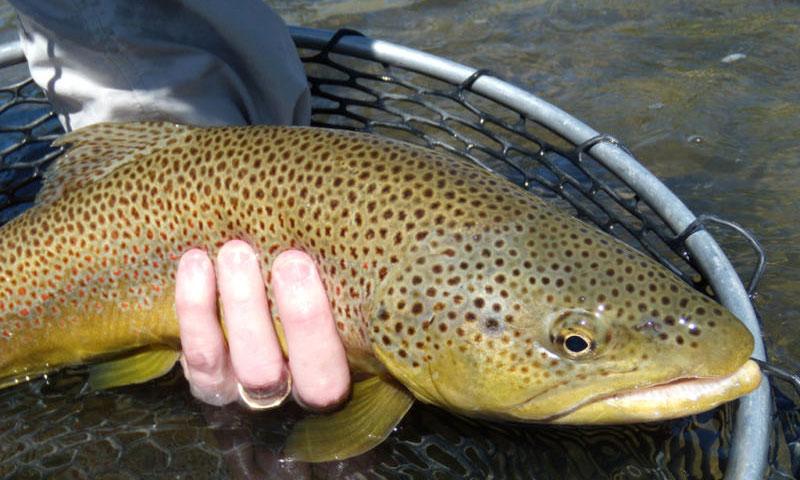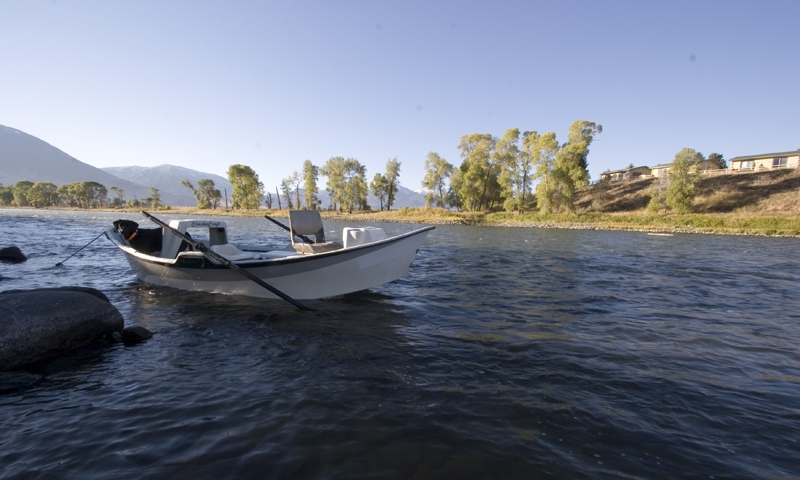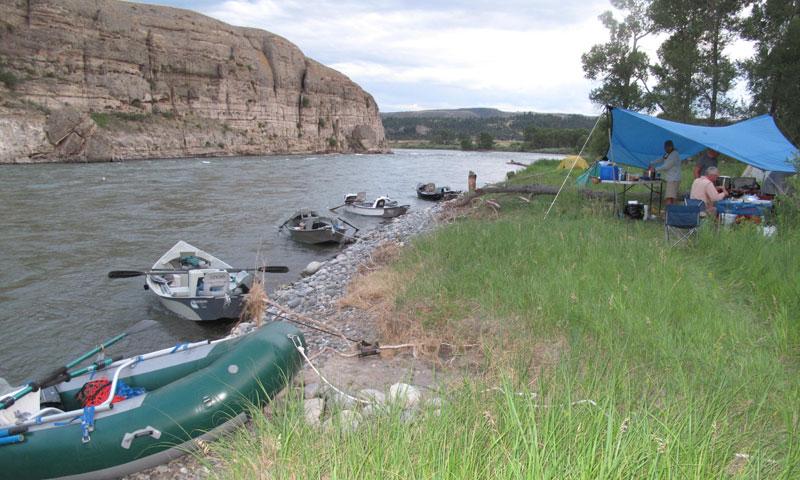- Yellowstone River MT is the longest undammed river in the Continental United States.
- Designated a Blue and Red Ribbon for trout fishing, the waters of the Yellowstone River hold a diverse population of fish and fishing habitats.
- Brown, brook, rainbow, and cutthroat trout populate the cold waters of the Yellowstone River Montana.
Overview
The Yellowstone River is impressive by all accounts, whether viewed from lookouts of the Upper and Lower Yellowstone Falls in the Grand Canyon of the Yellowstone River or from a drift boat angling for trophy-sized cutthroat further downstream. Its most diverse mix of aesthetic beauty and recreational opportunities can be found between Gardiner, Montana and Livingston, though fantastic trout fishing and unforgettable views reward visitors upstream and downstream from those locations.
Fishing
Designated a Blue and Red Ribbon for trout fishing, the waters of the Yellowstone River hold a diverse population of fish and fishing habitats. The trout fishing between Gardiner and Livingston is the stuff that Western angling dreams are made of. Brown, brook, rainbow, and cutthroat trout populate the cold waters of the Yellowstone River Montana. The Yellowstone fluctuates between 74 feet and 300 feet, so fishing here is typically done by boat. Late spring and summer Yellowstone River fly fishing is touted as “the romanticized western fly fishing experience come to life."
- Yellowstone River Headwaters Region: Hiking and horseback are the only way to get to this area, located about thirty miles above Yellowstone Lake. Native Yellowstone Cutthroat average 14-16 inches in size but summer migrations from Yellowstone Lake provide anglers with more trophy opportunities.
- Upper Yellowstone: From Yellowstone Lake until it reaches the park boundary, the Yellowstone River offers great fishing opportunities. Below Yellowstone Lake and Fishing Bridge (not an approved fishing location), the river is flat for miles, perfect to cast for trout. The Hayden Valley area is closed to fishing, but the area above the upper falls allows wading access. After the falls, the Yellowstone flows through two canyons with 1200 foot-high walls. The river is fishable after hiking into the canyons, and anglers have a great chance to catch sizable cutthroat and rainbow trout.
- Middle Yellowstone: The best fly fishing section of Yellowstone River starts as it leaves the park at Gardiner and continues through Paradise Valley and Livingston, Big Timber and Columbus, Montana, for about 130 miles. Through this middle stretch, many anglers fish from a drift boat. Fish in these sections average 13-18", with many exceeding the 20 " mark. Spring caddis, Salmonflies and hoppers, Fall mayflies and streamers, and even winter midges, provide year-round fishing for native cutthroat, rainbows, and brown trout.
Rafting
Floating is not allowed in Yellowstone Park, but can begin at the town of Gardiner. Dowstream from Gardiner, the rolling rapids fluctuate between Class II and III rapids based on the time of year, requiring experienced floaters in rafts, driftboats, canoes or kayaks. Below Livingston, the waters are easily floated by anyone. Regardless of skill level, the Yellowstone broadcasts gorgeous scenery, flowing through breathtaking Paradise Valley and flanked by the Absaroka Mountains on either side. Ensure a safe and scenic trip with a whitewater rafting guide.
Highlights
- Yellowstone River MT is the longest undammed river in the Continental United States.
- The river ecosystems are influenced by the natural course of the peak and low flows of this unbridled river.






















